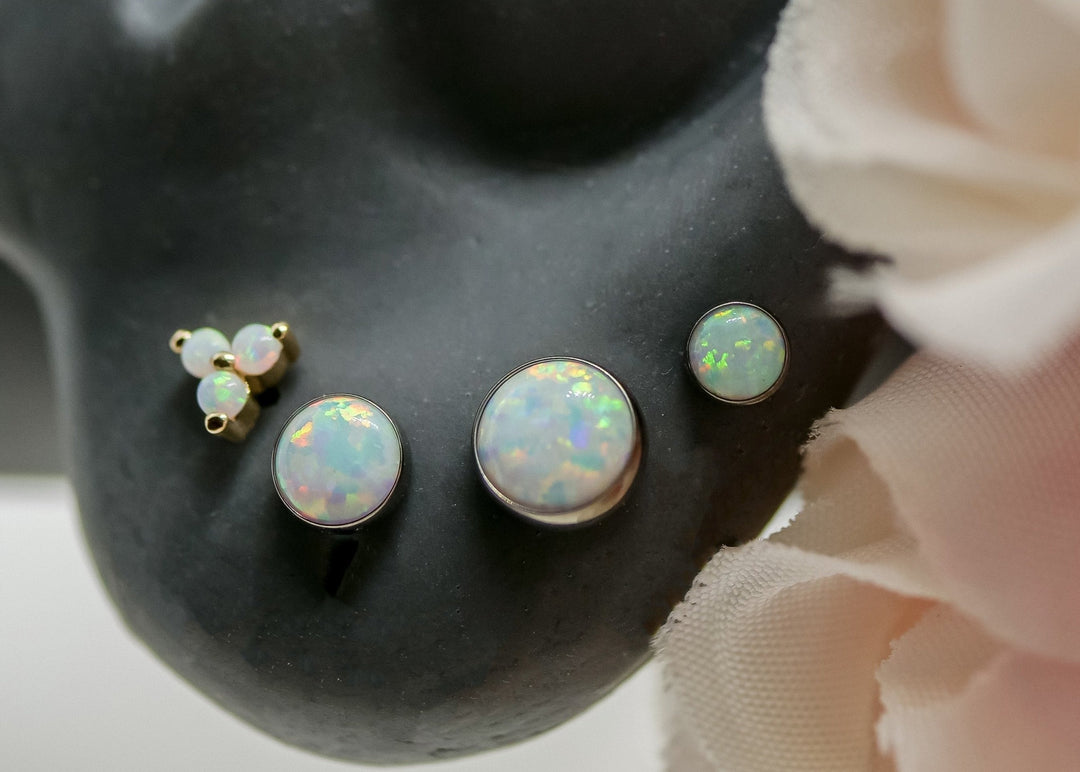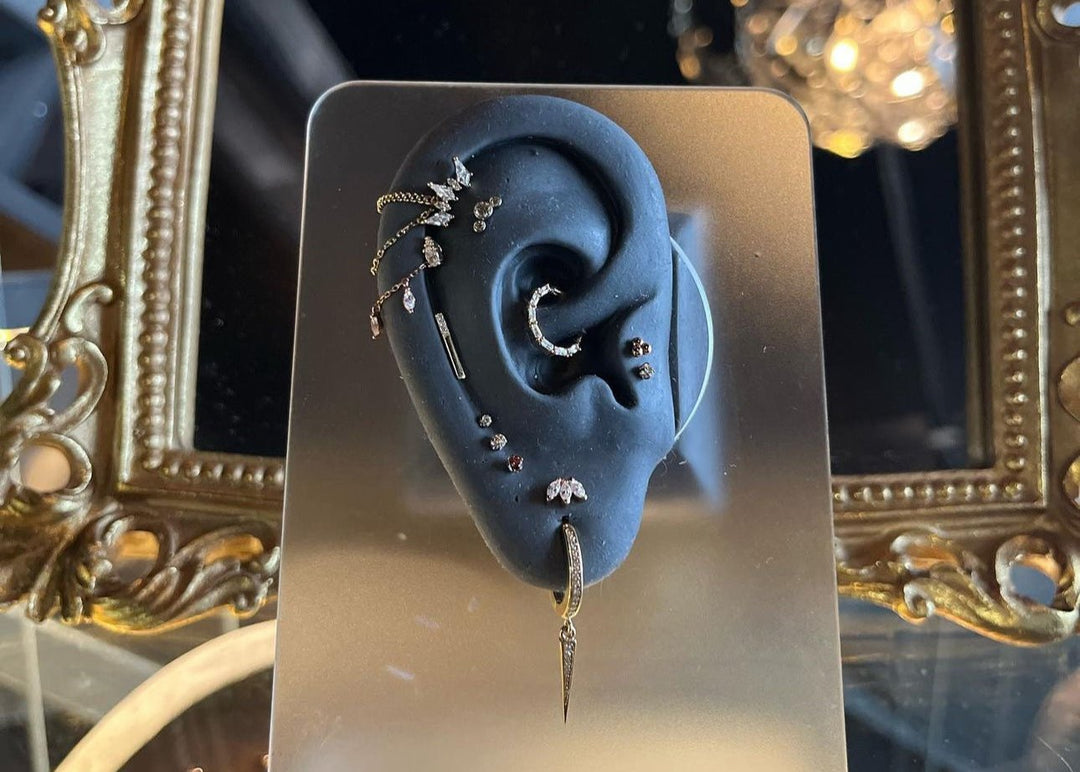When you get a new piercing, your initial jewelry isn’t always meant to be permanent. In many cases, piercers choose slightly longer or thicker pieces to accommodate the swelling and natural changes your body undergoes during the early stages of healing. Once the piercing settles down, properly downsizing—replacing that initial jewelry with a more snug, appropriately fitted piece—can make all the difference in your comfort, healing, and long-term satisfaction. Here’s why this often-overlooked step is so important, and how to know when it’s time.
What Does Downsizing Mean?
“Downsizing” refers to switching out the original jewelry in your piercing for a shorter post or smaller diameter ring once initial swelling subsides and healing progresses. The reason for starting with a longer post is simple: your body naturally responds to a new piercing with swelling, and giving it extra space helps prevent the jewelry from pressing too tightly against the tissue. After a few weeks or months—depending on the piercing location and individual healing time—this swelling will go down, leaving extra room between the jewelry and your skin.
Why Your Piercer Starts with Larger Jewelry
-
Accommodating Swelling:
Immediately after piercing, your body’s inflammatory response can cause notable swelling. A longer barbell or roomier ring ensures the jewelry won’t embed into the skin. -
Preventing Pressure and Irritation:
Tight-fitting jewelry from day one can cause undue stress on delicate healing tissue, potentially leading to irritation bumps, longer healing times, or migration. -
Allowing for Post-Piercing Changes:
Everyone’s healing journey is unique. Extra space in the jewelry gives a margin of safety as your body adjusts during the crucial early weeks.
When Should You Downsize?
The right time to downsize depends on the type of piercing and your individual healing process. Here are some general guidelines:
-
Ear Cartilage Piercings (Helix, Tragus, Conch):
Typically, you can consider downsizing after about 8-12 weeks, once swelling reduces and the piercing no longer feels sore or tender to light touch. -
Nostril and Septum Piercings:
Nasal piercings can often be downsized after 6-8 weeks, but always check with your piercer. The nose can be sensitive, and subtle swelling can linger longer than you think. -
Lip and Oral Piercings (Labret, Medusa, Vertical Labret):
Oral tissue tends to heal quickly. You may be able to downsize lip piercings around 2-4 weeks after the initial piercing, once the inner swelling has significantly subsided. -
Navel and Surface Piercings:
These can be trickier and may require more time—anywhere from a few months to longer—due to the likelihood of movement and irritation. Your piercer can advise you based on how well you’re healing.
Remember, these timelines are not set in stone. A reputable piercer will assess your healing and determine if downsizing is appropriate.
Why Downsizing Matters
-
Enhanced Comfort:
Overly long posts or loose-fitting rings can move around excessively, causing friction, irritation, and sometimes even pain. Downsizing to a snugger fit leads to a more comfortable experience day-to-day. -
Improved Aesthetics:
Shorter posts sit closer to the skin, creating a sleeker and more polished look. You’ll likely notice that the jewelry looks more intentional and flattering once properly sized. -
Better Healing Environment:
Properly fitted jewelry reduces the risk of catching on clothing or hair and lessens the likelihood of knocking the piercing. This more stable environment can help speed up the healing process and prevent complications like hypertrophic scarring or migration. -
Long-Term Health of the Piercing:
A well-fitted piece of jewelry allows the piercing channel to settle and strengthen over time. This sets you up for fewer issues in the long run, so you can enjoy your piercing with minimal maintenance.
Potential Risks of Not Downsizing
If you skip downsizing or delay it too long, you might encounter:
- Migration or Shifting: Excess room can cause the piercing to shift or tilt, potentially healing at a crooked angle.
- Increased Irritation and Bumps: Constant movement inside a looser-fitting piercing can lead to irritation bumps, redness, or even prolonged healing.
- Greater Snagging Hazards: Longer bars and larger rings are more likely to catch on clothing, headphones, or masks, risking discomfort and damage.
How to Downsize Safely
-
Consult a Professional:
Never attempt to downsize on your own without prior experience. Your piercer will use sterile tools, ensure the right fit, and check that the piercing is ready for a shorter piece. -
Opt for Quality Materials:
Stick to implant-grade metals like titanium or 14k+ solid gold, or high-quality biocompatible materials. This ensures a smooth transition to a smaller piece without introducing new irritation. -
Follow Aftercare Instructions:
Even though the piercing is partially healed, continue to clean it as advised and watch for any unusual redness, swelling, or discharge after the swap.
Downsizing is a subtle but crucial step in nurturing a healthy, aesthetically pleasing piercing. By knowing when to downsize and understanding the benefits—from enhanced comfort to reduced risks of complications—you’ll be better equipped to care for your piercing over the long haul. Always trust the expertise of your professional piercer, keep an open line of communication, and remember: a well-fitted piece of jewelry can make all the difference in ensuring your piercing looks and feels its very best.






